Join us in celebrating the Pennsylvania’s latest additions to the National Register of Historic Places! The PA-SHPO extends our congratulations and heartfelt thanks to all those who worked so hard on these nominations.
Bath Crossroads Historic District
Bath, Northampton County
Listed, 2/12/2024
PA-SHARE Resource #1998RE01959
In the late 1700s, the small, rural village of Bath only consisted of a few homes and shops. Just fifty years later, however, the town would emerge as a regional center of commerce, industry, culture, and transit in the mostly rural Northampton County and greater Lehigh Valley – a year-round destination for dining out, dancing, theater, and sleighing parties during the winter. The key to this growth was its location, as six roads intersected in the village center. Wagons of grain and goods passing through the streets became commonplace and established Bath as a regional transit hub by 1800.

East Main Street in Bath, Northampton County
Today, this crossroads village is honored by its listing in the National Register for its significance as a historic commercial center and for its well-preserved architecture. Bath’s collection of early Georgian and Federal style buildings is uncommon in the region, and it also contains excellent examples of nineteenth and early twentieth century architectural styles.
Bell Telephone Company
Wilkes-Barre, Luzerne County
Listed, 5/9/2024
PA-SHARE Resource #1995RE44523
The Bell Telephone Company building in Wilkes-Barre was constructed in 1906 as a central office and switchboard exchange location for the renowned company. Attracted to the booming anthracite coal industry, the Wilkes-Barre Central Office exemplifies the larger company’s efforts to modernize and centralize telephone operating systems in the Wilkes-Barre community. This modernization included a large investment into reconstructing the city’s entire telephone system, which made Wilkes-Barre the “great nerve center” of the region.
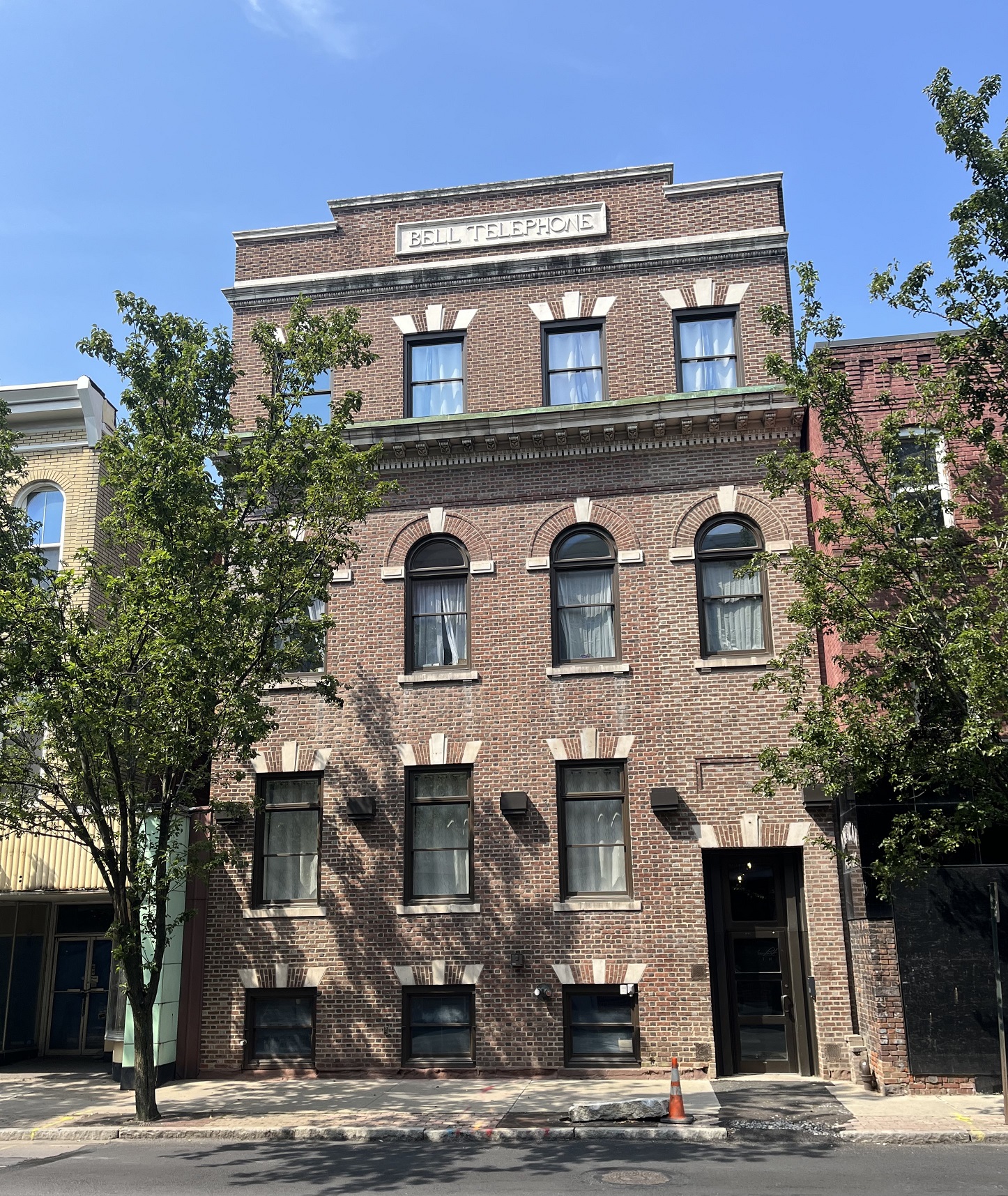
Bell Telephone Building, Wilkes-Barre, Luzerne County
During this expansion period in telephone services, the Wilkes-Barre Central Office served as the central corporate office in downtown Wilkes-Barre, held and operated the ever-important switchboard systems that enabled calls to be transferred from place to place, and housed public telephone booths for the residents of the city to place calls at a time in which in-home telephone systems were uncommon. As such, the Wilkes-Barre Central Office is significant in the history of communications as an excellent representation of a regional telephone office and exchange building that served Wilkes-Barre and the surrounding area during a crucial development period in the history of the Bell Telephone Company of Pennsylvania.
Hosanna Church and Cemetery
Upper Oxford Township, Chester County
Listed, 3/25/2024
PA-SHARE Resource #2014RE00031
The Hosanna Church, now the Hosanna African United Methodist Protestant Church, was built in 1843-1885 and is historically significant as a surviving feature of the village of Hinsonville, a pre-Civil War free Black settlement in southern Chester County, Pennsylvania. The church played a central role in the life of Hinsonville residents, serving as a worship space and a gathering place for leaders in the abolition and colonization movements. The cemetery marks the final resting place of Hinsonville founding residents and their descendants, including seventeen Civil War veterans of the 54th Massachusetts Infantry Regiment.
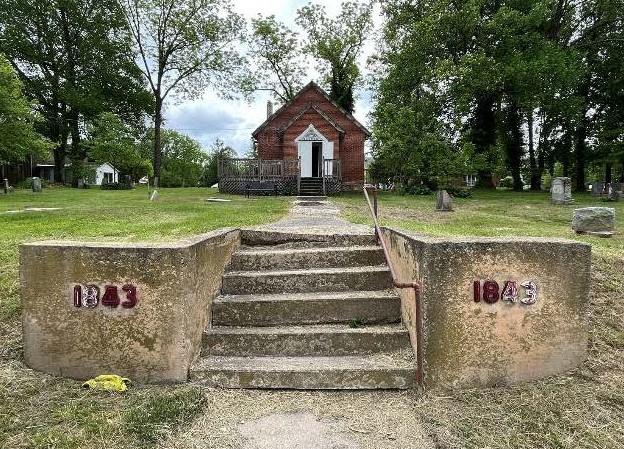
Hosanna Church and Cemetery, Upper Oxford Township, Chester County
The history and significance of the church is also bound to the founding of the Ashmun Institute in 1857, later Lincoln University, through the relationship between Hosanna founding member James Ralston Amos and Ashmun Institute founder, the Reverend John Miller Dickey. It was through his efforts to educate and prepare Amos for a ministry in Africa that Dickey established what would become the first degree-granting Black college in the United States. James Ralston Amos and his brother Thomas H. Amos were the first graduates. Significant members of the abolitionist movement – including Frederick Douglass and Sojourner Truth – visited the church, and it is likely that it was a station on the Underground Railroad.
Juniata Terrace Historic District
Juniata Terrace, Mifflin County
Listed, 5/17/2024
PA-SHARE Resource #2011RE00588
The Juniata Terrance Historic District is an important local example of a planned company town for the American Viscose Co. This Garden City inspired design was created by Emile Perrot in 1923. By 1928 American Viscose Co. also constructed a company store and elementary school within the small community.
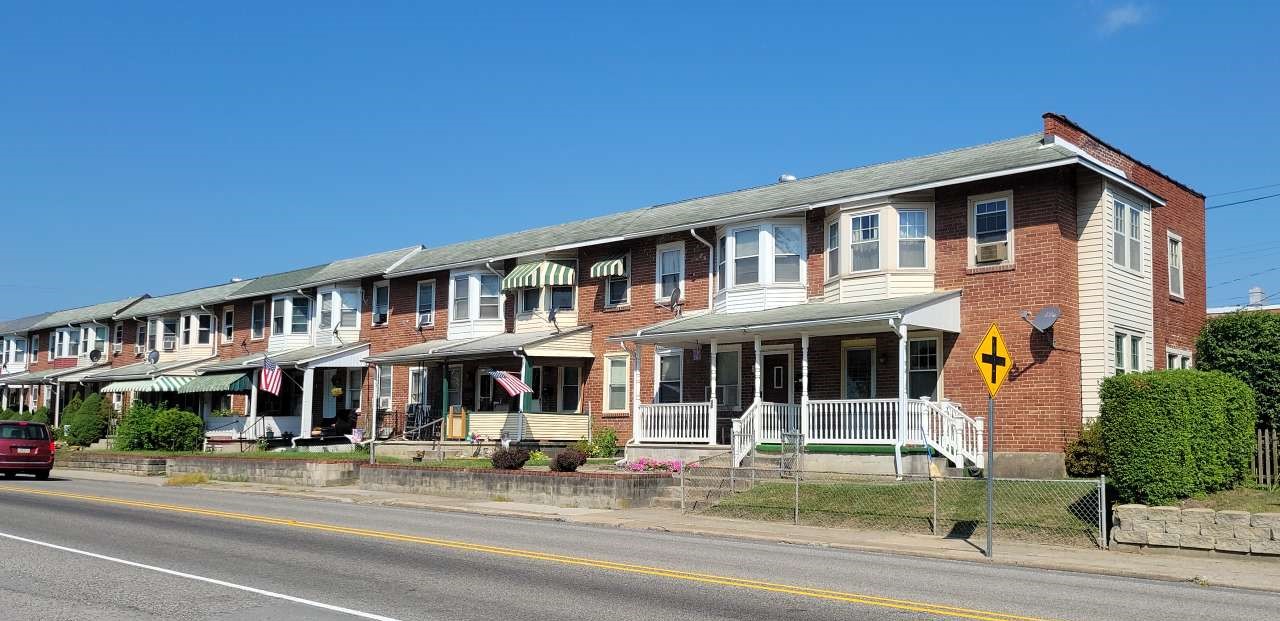
Delaware Blvd in the Juniata Terrace Historic District, Juniata Terrace, Mifflin County
Characteristic of the Garden City movement, the design for Juniata Terrance utilized open green space within a wide central boulevard, embraced simple, vernacular style architecture, and created an affordable living environment with accessibility to the American Viscose plant, which was located adjacent to the community just below the terraced hillside. The community remained under control of the American Viscose Co. until the early 1950s when the last residence was sold to private ownership. Juniata Terrace as it remains today has seen relatively little change and continues to be an excellent example of a planned Garden City industrial village.
Mt. Alvernia Historic District
Shaler and Millvale Boroughs, Allegheny County
Listed, 4/4/2024
PA-SHARE Resource #1995RE01407
The Sisters of St. Francis of the Diocese of Pittsburgh arrived in Pittsburgh in 1865, purchased hilltop property in Millvale Borough and Shaler Township in 1894, and built Mt. Alvernia according to architect Sidney F. Heckert’s design between 1897-1900. The immense Motherhouse was, effectively, an entire community under one roof. Its specialized spaces met the sisters’ needs for living, cooking, dining, hosting, working, learning, worship, leisure, and convalescence in a single building.
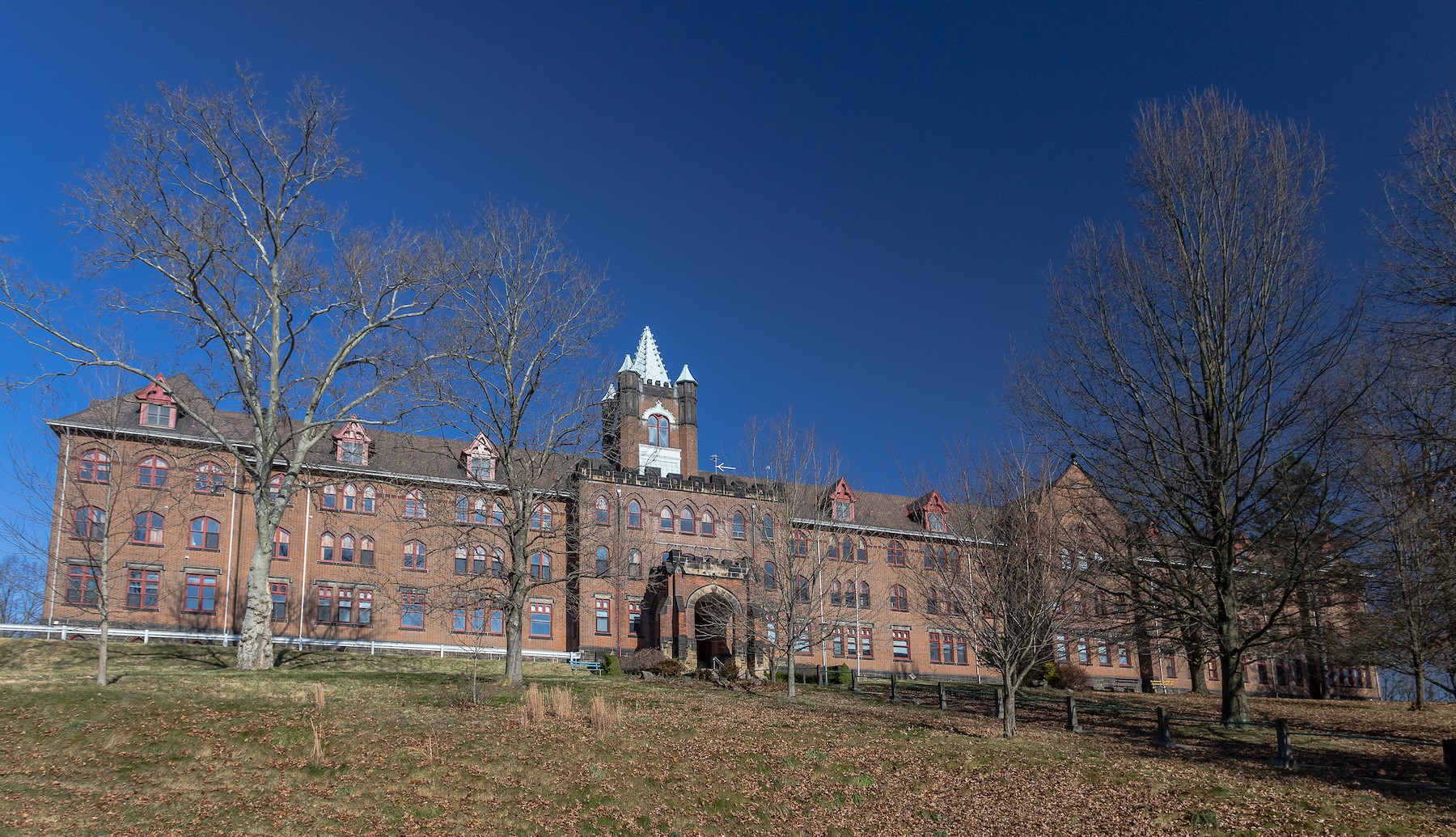
Sisters of St. Francis of Mt. Alvernia Motherhouse in the Mt. Alvernia Historic District, Shaler and Millvale Boroughs, Allegheny County
It is historically significant due to its impressive architecture and its association with the sisters’ faith-based endeavors to educate and to heal. The sisters of Mt. Alvernia had two primary vocations: nursing and teaching. While in residence at Mt. Alvernia, the sisters improved and expanded St. Francis Hospital (which they had previously established in the Lawrenceville neighborhood of Pittsburgh), trained thousands of nurses, and opened and ran other community hospitals in New Castle and Cranberry, Pennsylvania, and Columbus, Georgia. At the same time, the sisters developed programs and facilities on their campus for the training of teachers as well as an accredited Catholic girls’ high school. Mt. Alvernia High School occupied the renovated basement of the Motherhouse from the 1950s until its closure in 2011.
Nineteenth Street Theatre
Allentown, Lehigh County
Listed, 2/12/2024
PA-SHARE Resource #2010RE03855
On September 17, 1928, the doors of the Nineteenth Street Theatre opened for its first showing, a silent film called The Sawdust Paradise. This historic theater still stands as a local landmark almost 100 years later, and is significant as an opulent and exuberant example of the Art Deco Style. It was designed by Philadelphia architects Clarence Stern Thalheimer and David D. Weitz, and was one of their earliest forays into designing theaters. It also was one of their most elaborate creations, featuring stylized elephant heads on the façade, embellished ceiling medallions, and colorful terra cotta accents.
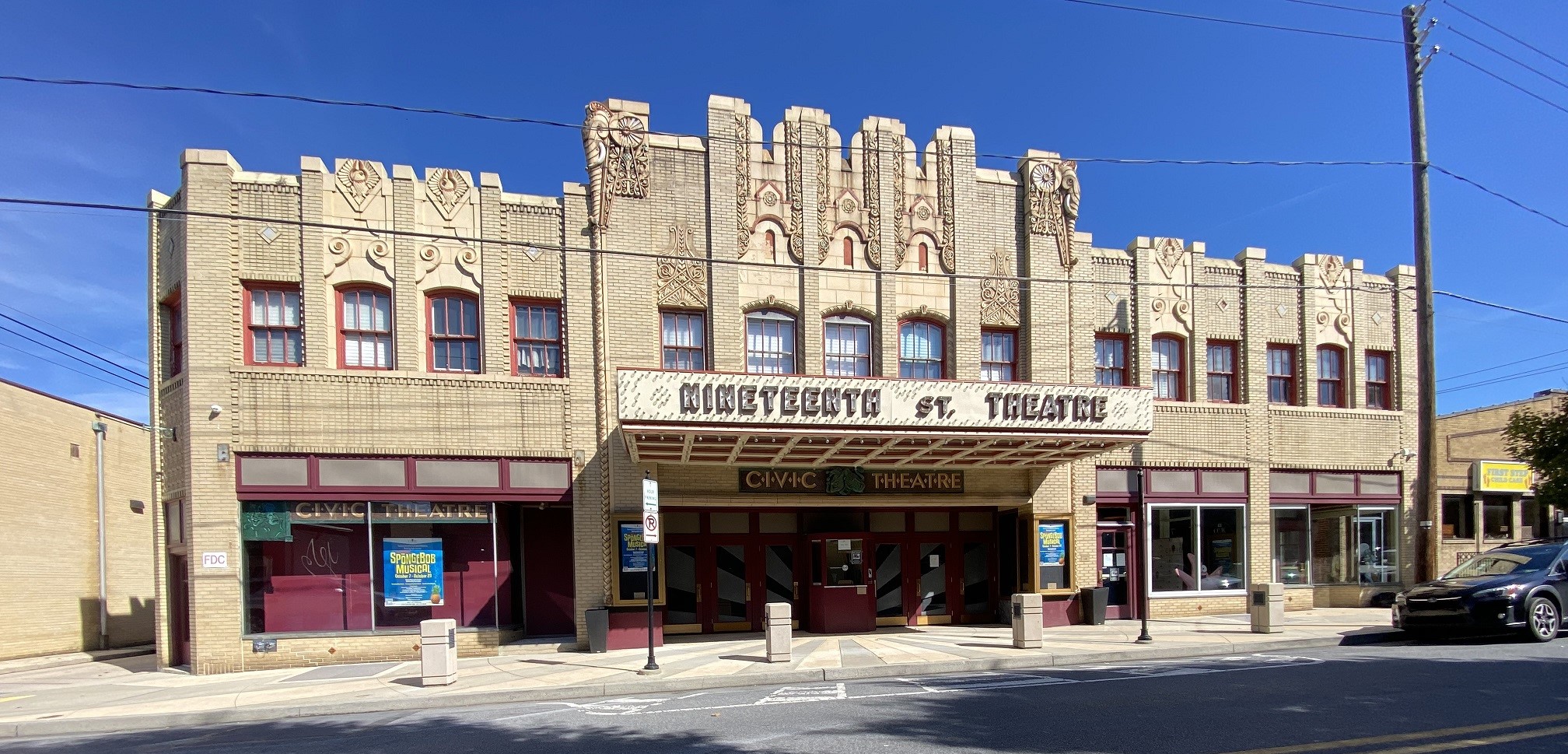
19th Street Theatre, Allentown, Lehigh County
Since 1957, the Nineteenth Street Theatre has been home to the Civic Theatre, an organization founded in the 1920s as part of the “Little Theatre” movement, which promoted community performances with local, as opposed to professional, actors. Today, the Civic Theatre still offers robust educational programs, screens first-run films, and hosts locally produced live theater in the heart of Allentown’s West End Theatre District.
Pringle Electrical Manufacturing Company Building
Philadelphia
Listed, 2/12/2024
PA-SHARE Resource #2023RE03881
The Pringle Electrical Manufacturing Company Building is significant as the longtime home of a pioneering manufacturer of electrical equipment during the early years of electricity in the United States. Founded in 1891 by William T. Pringle, in 1895 the company was the first to mass produce and sell a recessed electrical outlet and attachment plug, known as the “Chapman Plug.”

Pringle Electrical Manufacturing Company, Philadelphia
During the early twentieth century, Pringle began to develop and market a wide range of innovative industrial electric switches and switchboards, which were used in many of the country’s largest building and transportation projects. Later, in the early 1950s, the company introduced the first bolted pressure switch, now commonly known as the “Pringle Switch,” which quickly became an industry standard in high current applications and remains so today.
William and Elisabeth Edwards House
Spartansburg, Crawford County
Listed, 2/12/2024
PA-SHARE Resource #2018RE02690
The William and Elisabeth Edwards House was built by its first owner, William Edwards, in 1881, and is significant for its unique architecture. Edwards had been trained as a stonemason in Scotland before immigrating to Pennsylvania. His home demonstrates both his cultural heritage and impressive masonry skills.
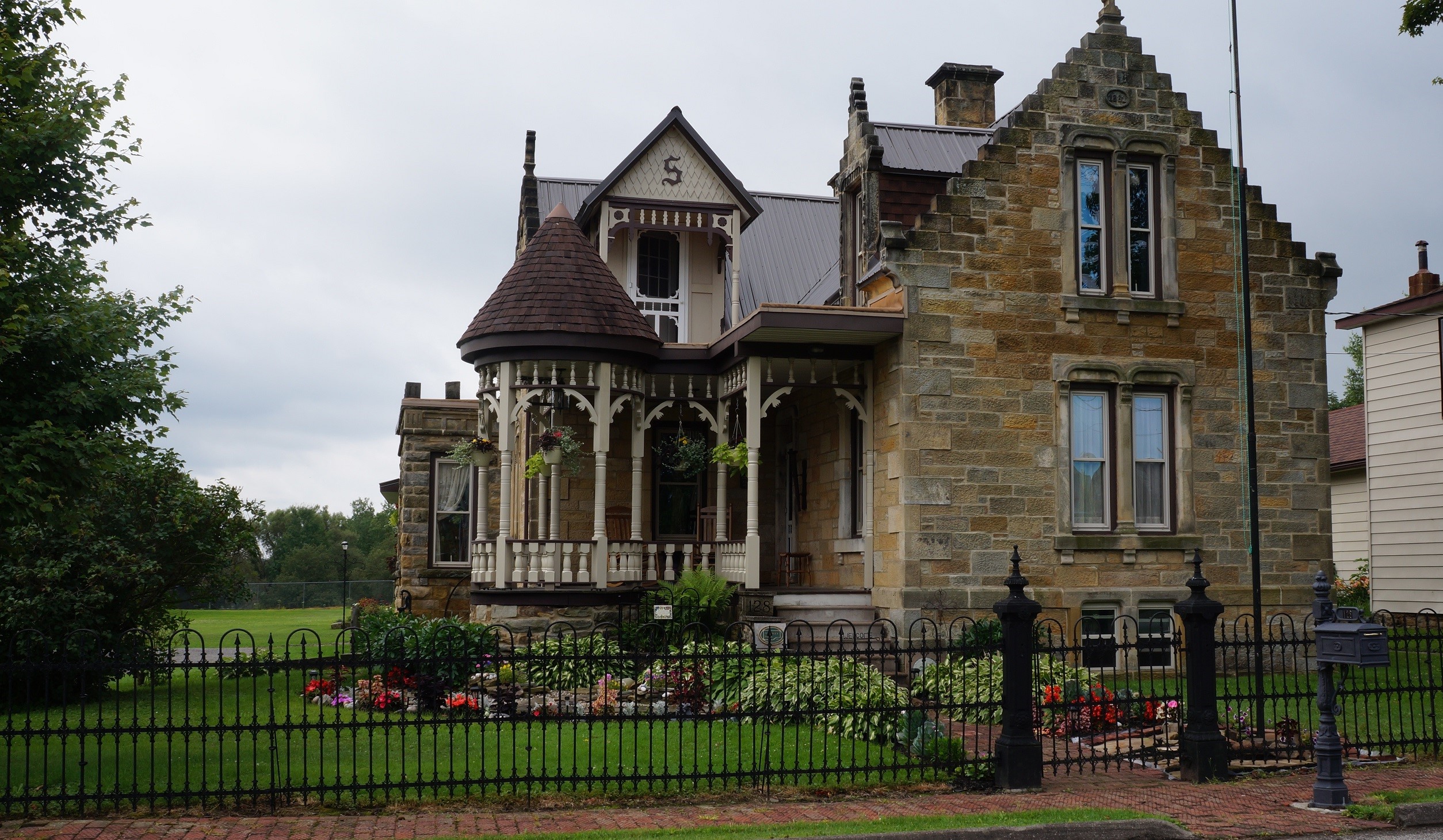
William and Elisabeth Edwards House, Spartansburg, Crawford County
The building is an example of the Scottish Baronial style, a form of Gothic Revival architecture that emerged in Scotland during the mid-nineteenth century. Edwards included elements that were common on churches or large public buildings but unusual to find on private homes, such as parapeted “crow-stepped” gables, crenellations, and hand-carved details. The entire building is constructed of hand-hewn, polychromatic sandstone, and is the only of its kind in Spartansburg.
Windsor Manufacturing Company
Philadelphia
Listed, 3/25/2024
PA-SHARE Resource #2023RE00063
John Oughton, an English immigrant with previous experience in the silk mill industry, founded the Windsor Manufacturing Company in 1909. The business specialized in worsted fabrics and men’s wear. At first, the company leased space for its looms, but in 1919 it built a three-story factory to house its operations. This building was listed in the National Register for its significance to industrial history. The expansion of Windsor Manufacturing was directly tied to World War I and the company’s success in securing lucrative defense contracts. At their new factory, Windsor Manufacturing employed 160 people to run 116 looms, producing almost one million yards of cloth per year.
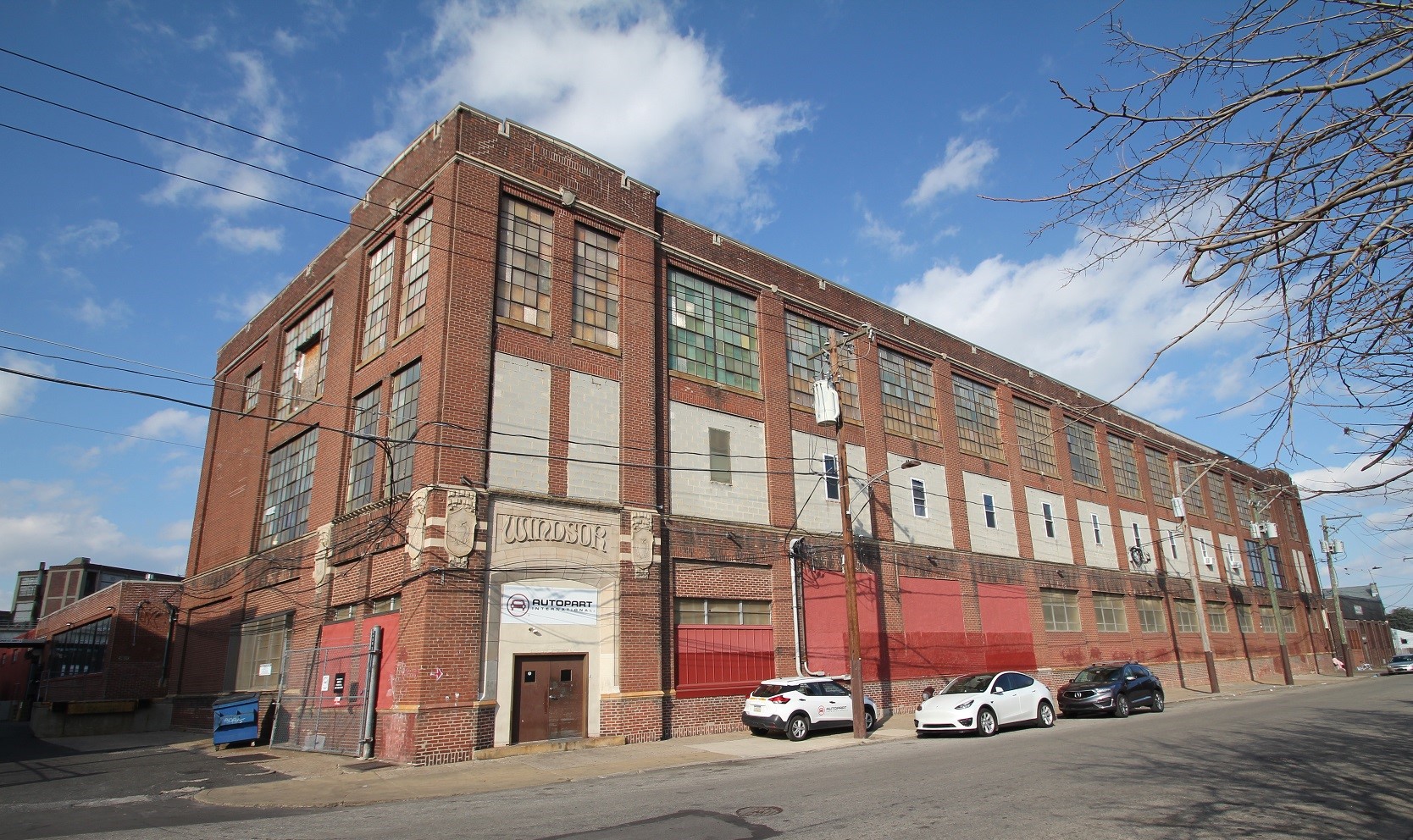
Windsor Manufacturing Company, Philadelphia
In 1938, these workers went on strike over working conditions. While the results of this strike were inconclusive, the workers did unionize under the CIO as a result. With the outbreak of World War II, Windsor Manufacturing scaled up production in support of the war effort, employing well over 200 people to work 132 looms. In 1942, workers once again went on strike, shuttering operations and threatening Windsor’s defense contracts. Under pressure from Washington, the company agreed to raise wages, setting a precedent for federal involvement in labor disputes involving war contracts.
Zembo Shrine
Harrisburg, Dauphin County
Listed, 2/12/2024
PA-SHARE Resource #1988RE00076
In 1925, under the leadership of Potentate Mercer B. Tate, Shriners in Harrisburg launched a building campaign to secure a new home large enough to hold their rapidly growing order and their many benefits for Shriners Hospitals and other charitable works. Completed five years later in 1930, Zembo Shrine is significant as a unique example of the Moorish Revival and Art Deco styles in Central Pennsylvania. It reflects the trend popular among Shriner organizations in the early 20th century to incorporate Islamic, North African, and Moorish architectural elements into their buildings.
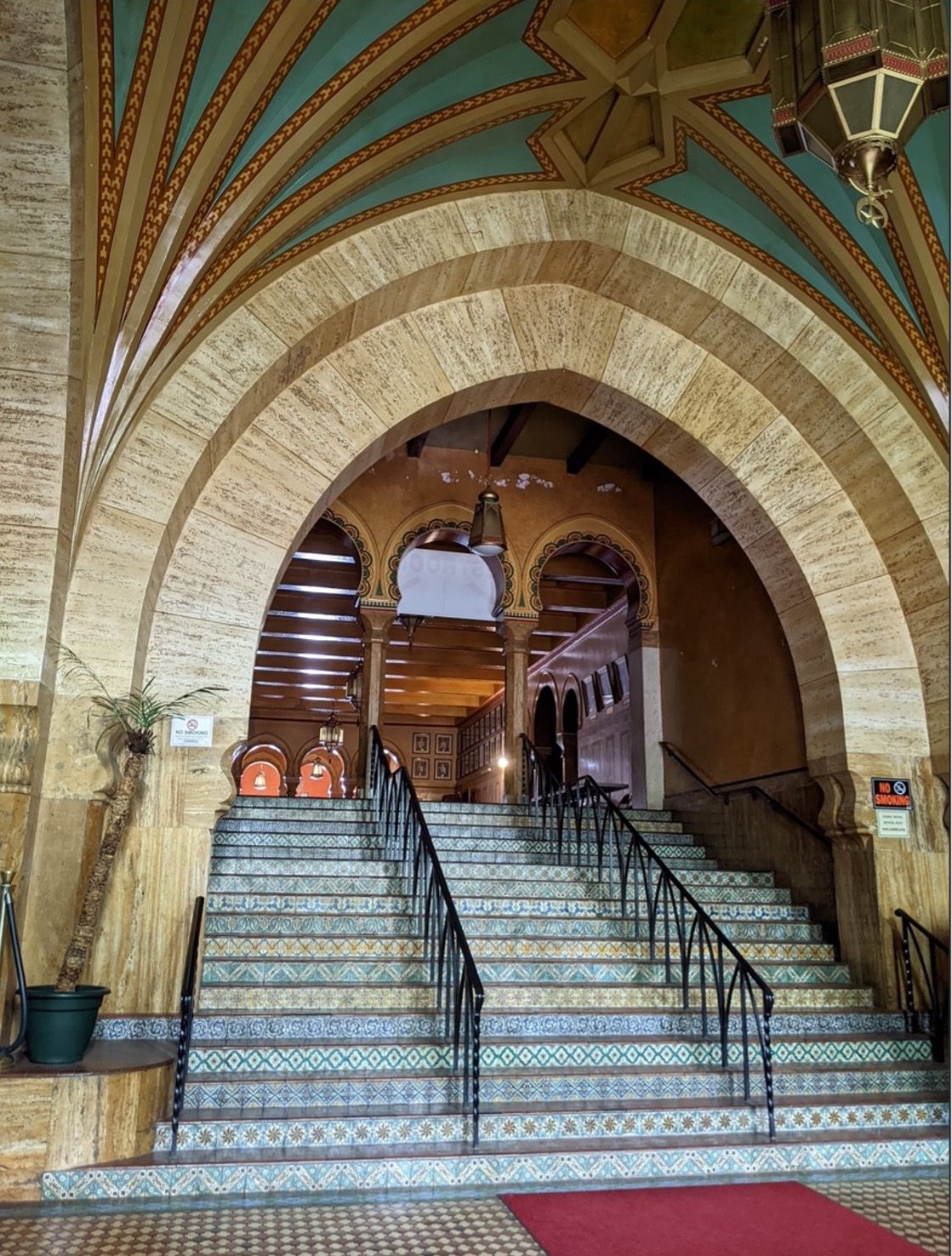
Zembo Shrine, Harrisburg, Dauphin County
Zembo Shrine is also an example of the work of prominent local architect Charles Howard Lloyd, who designed many other landmarks in the area, including the Harrisburg School District Offices, William Penn High School, and the Claster Building, all in Harrisburg. Among his many commissions, Zembo Shrine stands out as one of his greatest and most unique designs.
Comment Policy
PHMC welcomes and encourages topic-related comments on this blog. PHMC reserves the right to remove comments that in PHMC’s discretion do not follow participation guidelines.
Commenters and Comments shall be related to the blog post topic and respectful of others who use this site.
Commenters and Comments shall not: use language that is offensive, inflammatory or provocative (this includes, but is not limited to, using profanity, obscene, or vulgar comments); disparage other commenters or people; condone illegal activity; identify the location of known or suspected archeological sites; post personal information in comments such as addresses, phone numbers, e-mail addresses or other contact details, which may relate to you or other individuals; impersonate or falsely claim to represent a person or an organization; make any commercial endorsement or promotion of any product, service or publication.
If you would like to comment on other topics not related to this blog post but related to PHMC, please fill out the PHMC Contact Us Form.
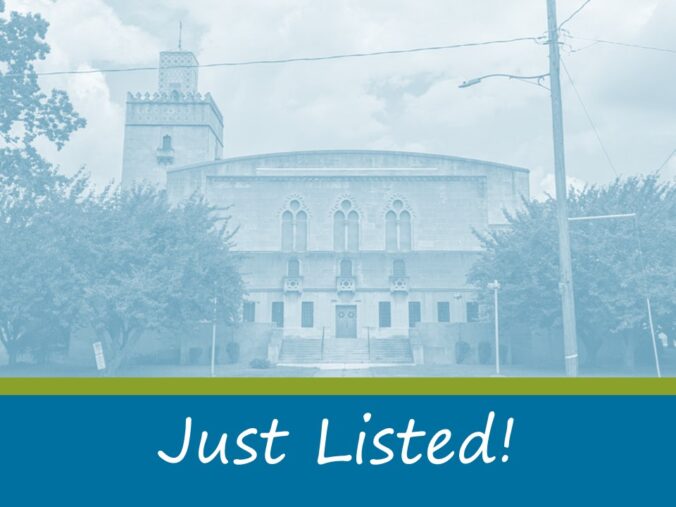
Leave a Reply